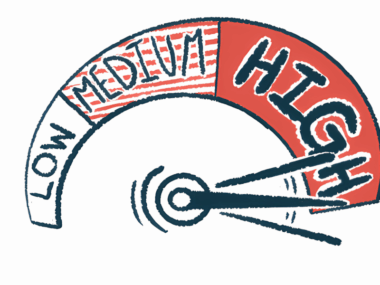Thymectomy may ease neurological symptoms in older patients: Study
Surgery helps nearly 90% of patients over 65 with MG and thymus tumor
Written by |

Surgical removal of the thymus, called a thymectomy, may significantly ease the neurological symptoms of patients older than 65 who have myasthenia gravis (MG) and a thymus tumor, according to a new study from researchers in Italy.
Overall, nearly 90% of older individuals undergoing thymectomy showed a neurological response, the researchers reported, noting that a small proportion had unchanged or worsening symptoms, or died due to MG.
These findings show that “for MG and thymoma-affected patients over 65 years, thymectomy seems to be an effective treatment to improve neurological symptoms,” the researchers wrote.
“We suggest to set up clinical trials to explore the neurological efficacy of mini-invasive thymectomy in clinically selected MG patients aged over 65 years,” the team wrote.
Their study, “Thymoma resection and myasthenia gravis: what is the neurological outcome in patients older than 65 years?” was published in the journal Updates in Surgery.
Investigating a proposed need to extend surgery to older patients
In most cases, MG occurs when the immune system mistakenly attacks proteins at the neuromuscular junction — the site where nerve and muscle cells communicate to coordinate voluntary movements. These antibodies most commonly target acetylcholine receptors (AchRs) in muscle cells.
Although the exact origin of these self-reactive antibodies is not fully known, researchers believe the thymus gland, an organ that’s part of the immune system, may play a role in their production. About 70% of people with MG have an enlarged thymus, and 10%-15% have thymus tumors, called thymomas.
A recent international consensus guidance for MG therapies has suggested thymectomy as a treatment for patients with generalized MG and anti-AChR antibodies, younger than 65, and without a thymoma.
“However, in the recent literature some authors are advocating the need of extending the indication of surgery to older patients,” the researchers wrote.
To learn more about the impact of age on this surgery, a team led by researchers in Rome retrospectively analyzed the clinical outcomes of a group of MG patients older than 65 following thymectomy.
The surgery was performed in individuals with both thymoma and MG, due to an oncological indication. In those with rapid MG progression, the surgery also was indicated for the purpose of enabling potential neurological benefit.
A total of 66 patients, with a mean age of 68.3 at the time of disease onset and 70.1 years at the time of surgery, were included in the study. Nearly two-thirds were women (65.1%) and most (78.8%) had anti-AchR antibodies.
Before surgery, according to the Osserman score for disease severity, 53% of patients had generalized muscle involvement and 10.6% had bulbar symptoms — those involving the face and neck. In 24.2% of the patients, only eye and eyelid muscles were affected.
Findings may be ‘proof of principle’ for expanded use of thymectomy
Most patients were treated with corticosteroids alone (31.8%), while 30.3% received corticosteroids in combination with pyridostigmine (sold as Mestinon) and immunosuppressants. The remaining individuals received a corticosteroid and pyridostigmine, or pyridostigmine or an immunosuppressant alone.
The most commonly used surgical procedure, which was adopted in 62.1% of patients, was sternotomy — a procedure that involves cutting the breastbone (sternum) to remove the thymus. In 21.2% of the patients, a minimally invasive procedure called robotic-assisted thoracoscopic surgery (RATS), was used.
In nearly all cases (97%), the tumor was removed without cancer cells seen microscopically at the tumor site. A total of 36 patients required adjunctive radiotherapy.
According to the MG Foundation of America-Post-intervention status (MGFA-PIS), which was used to assess neurological outcomes following thymectomy, most patients (88%) had significant neurological improvement after undergoing surgery.
[The] neurological response … observed in 89.2% of patients … is a quite encouraging result. … These observations may represent the proof of principle for exploring this field and proposing to include the use of thymectomy for clinically fit patients aged more than 65 years affected by MG.
Specifically, 65.2% of the patients had minimal disease manifestations, while 11 showed no signs of disease activity but were still receiving treatment to control symptoms — a status called pharmacological remission. Four patients achieved complete stable remission, showing no evidence of disease activity or symptoms while taking no medication for at least one year.
There was no correlation between the neurological outcome and age of MG onset, tumor dimension or staging, type of medication used before the surgery, surgical approach, or the pre-operative Osserman score.
Overall, according to the researchers, the “neurological response … observed in 89.2% of patients … is a quite encouraging result.”
“These observations may represent the proof of principle for exploring this field and proposing to include the use of thymectomy for clinically fit patients aged more than 65 years affected by MG,” the team wrote, adding that these findings “need to be validated in a larger study composed of patients aged over 65 affected only with MG.”








Leave a comment
Fill in the required fields to post. Your email address will not be published.